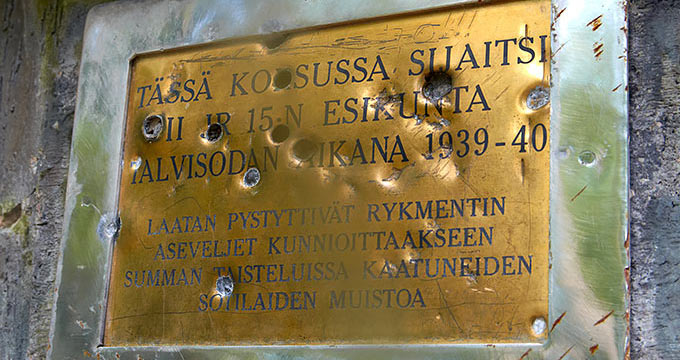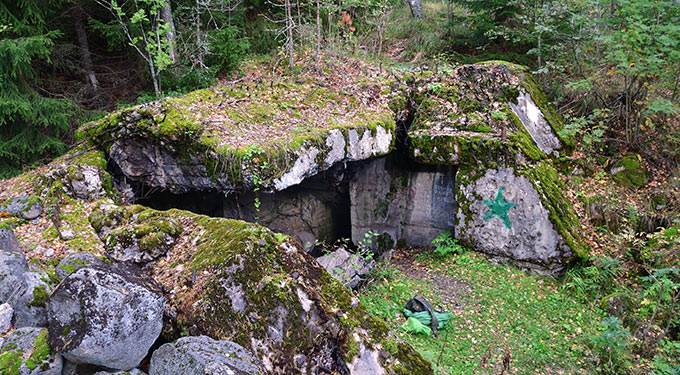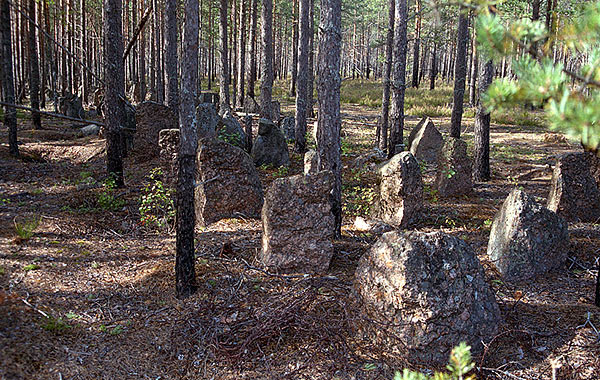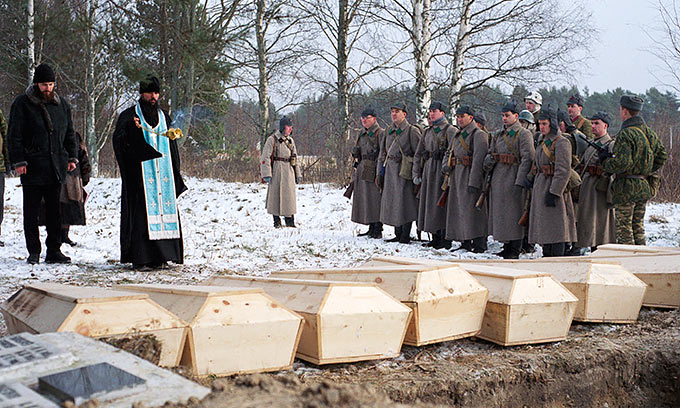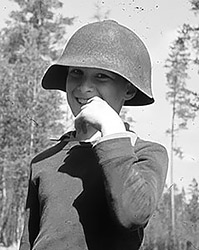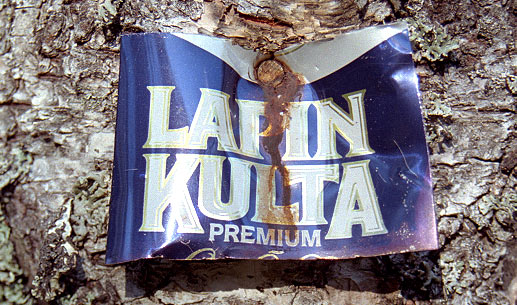Mannerheim Line
The Finns began to think about strengthening their southern border ever since the 1918 Civil War. The first plans of defense lines were worked out at that time.
In 1919 Major General Oskar Enkel held the post of the chief of Finnish General Staff. The strengthening of the Karelian Isthmus have began at that time. Under the project of 1921 the main part of defense line the (so called "Enkel Positions") passed through the points: Kljuchevoe-Ermilovo-Soldatskoe-lake Glubokoe-lake Rakovoe-Vuoksa river (new names). The rear defense position protected approaches to Vyborg passed through the line Sokolinskoe-Cherkasovo-Ozernoe-Veshcevo.
In 1921-1924, 168 concrete defense installations were constructed: 114 machine-gun bunkers, 6 cannon caponiers, the others - command points, shelter etc. The main defense line consisted of 18 "battalion zones" (separate areas for a single battalion to defend) which were disposed with intervals of about 4 to 8 km. Dimensions of "battalion zones" were about 4 to 6 km at length and 1 to 2 kms in depth. There were 2 to 4 concrete and wooden and earthen pillboxes in each of "battalion zones" and also anti-tank and antipersonnel obstacles.
All the concrete installations of this period were small one story frontal fire machine-gun bunkers made of a poor quality concrete without reinforcement.
The next phase of defense works began in 1932 and lasted until the beginning of the Winter War (and never was completed - heaps of hardened cement in bag forms can be still be seen in many places of the Line). The modern flanking fire machine-gun bunkers of 2 to 4 embrasures were built. These bunkers were well inserted in local landscape, built with high quality reinforced concrete, included so-called "wings" (lateral protective walls), and armour-plating coverings (armored shields or screens) and armored observation cupolas. Older installations were modernized or reconstructed as shelters.
In 1937 the first pillboxes, nicknamed "millionaires", were constructed. These bunkers were named so because of their huge cost. They had two 1 to 2 machine-guns casemates connected by underground course with underground shelters and barracks for garrison.
In the autumn of 1939 there were 130 pillboxes in combat readiness (including 48 new/modernized ones) on a140 km length of defense line. Near to 130 km of anti-tank obstacles and 330 km of wire barriers were also built. Numerous field strengthening - supplemented entrenchments, trenches, dugouts, sites of artificial floodings and minefields completed the defense system of the Mannerheim Line.
In December 1939 the leading units of the Red Army (RKKA) reached the main line of Finnish defense and tried to immediately break through. Numerous attacks failed with huge losses in killed and wounded. The line where Soviet troops were stopped has been named the "Mannerheim Line" in honor of the chief commander of the Finnish army, former Russian General Carl Mannerheim.
After two months of preparation, artillery and air bombardment and continuous bloody attacks, the Soviet armies broken through the Finnish defense line near the village Summa. The Finnish command ordered to the troops to leave the strong points of the main defense line and retreat to the rear line of defenses near Vyborg in order to avoid encirclement.
Soviet sappers destroyed all the remaining installations of the Mannerheim Line in the summer of 1940.
Impressions
So, what is the famous fortress known as the Mannerheim Line? Mysterious concrete ruins where we collected rusty military things when we were child... "Powerful and strong defense line, surpassed Maginot Line and Siegfried Line, supplied with 3 to 4 level pillboxes..." (quota from "Fights in Finland", Moscow. 1941). Where are the 3 to 4 floored pillboxes? I do not know. I have wandered around many years in the area and found only three 2-floor ones...
Karelian Fortified Region (KaUR) is a much stronger defensive installation. So, why the Soviet Army, biggest and well-equipped than Finns, marked time here in the course of two months of the winter of 1939-40? I think the strength of the Mannerheim Line was first in the people who protected their native land just as the Russians were near to Moscow in the winter 1941. We have smashed the concrete pillboxes, but were not able to overcome the resistance of this fortress.
Land forts and fortress:
Bip Castle Gatchina Ivangorod Izborsk Kexholm Kirillov Monastery Koporye Novgorod Pechorskiy Monastery Peter&Paul Fortress Porkhov Pskov Schlisselburg Staraya Ladoga Tikhvin Vyborg Hameenlinna Hamina Kastelholm Kymenlinna Lappaenranta Raseborg Castle Savonlinna Tavetti Turku Visby Fredrikstadt Fredriksten Hegra Fort Hoytorp Fort Arensburg Narva Tallinn Antipatris Caesarea Jerusalem Latrun Fort Masada
Sea forts and fortresses:
Alexander Fort Ino Fort Krasnaya Gorka Fort Kronstadt: Kotlin isl. Kronstadt: North Forts Kronstadt: South Forts Trongsund Hanko Svartholm Sveaborg Marstrand Siaro Fort Vaxholm Oscarsborg
Artillery batteries and individual guns:
Coastal Artillery Hemso Fort
Fortified areas and defensive lines:
Karelian Fortified Area (KaUR) KrUR Leningrad Mannerheim Line Nevsky Bridgehead VT Line Harparskog Line Salpa Line Gothland
Russian
S e a r c h All news

